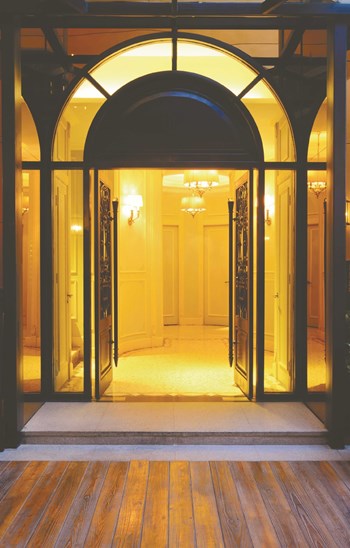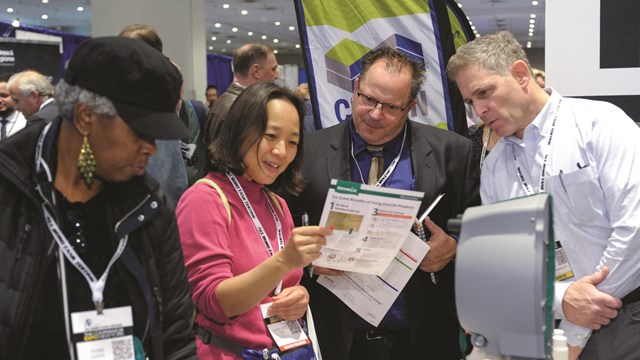
Call it the Ikea-fication of America. It seems that more and more people are getting interested in design, especially when it comes to their own home. In decades past, household furniture and decorations didn't vary a whole lot. Growing up in the twentieth century, odds are your friends' homes probably had a pretty similar couch and coffee table as your own. Thanks to new technology and an explosion of interest in retro styles, that has changed. New construction methods for residential developments over the years have ushered a new level of diversity in housing stock. There's the prewar single family home, the mid-century condo, and the newer steel-and-concrete buildings. Tastes vary more than ever, and interior designers are enjoying the array of projects.
But design is not just furniture and hanging art. A huge component to the feel of a home is the lighting, and new technology on the market is changing the way our homes look and feel. Lighting alone can change the way a home feels, or how a room can be used. New types of lighting and arrangements are giving designers and homeowners more options than ever. There have never been so many accepted options to light a living room, or even a bathroom. The changes are also economic. Emerging technology will influence maintenance costs, energy bills and even how we interact with light on a daily basis.
Out-candescents
Ever since electricity entered residential homes in the 1910s, the American market has depended overwhelmingly on incandescent bulbs. Incandescents use a thin filament that heats up with an electrical current, and emits a very pleasant, warm yellow light. Despite their warm glow however, the incandescents are energy-suckers, working at about five percent energy efficiency and burning out quickly.
Before the advent of newer technologies, most consumers considered wattage to be synonymous with brightness. A 60-watt bulb worked well for a reading lamp, and a 100-watt bulb was typically used for overhead area lighting. But in fact, wattage only signifies the amount of power that’s used to generate light. When growing energy prices prompted more demand for efficiency, the easiest switch from incandescent was halogen. For the most part, halogen lights maintain a similar quality of warm light, and are considerably more efficient than incandescents.
For years, the most reasonable alternative to the incandescent and halogen bulbs was fluorescent light. Everyone knows fluorescent light from offices, malls, and many other commercial spaces. Today, compact fluorescent bulbs (CFLs), which work in a typical incandescent socket, are replacing incandescents on the residential market, due to the demand for greater efficiency and new federal laws.
Their reputation as harsh lights are earned, says Jennifer Harris, owner of Jennifer Harris Interiors in Evanston. That's why they never gained favor in residential homes, despite their much greater energy efficiency. “I’m not crazy by the quality of light,” she says, “but think they’re getting better with the color of light that comes out. The original CFLs that came out, they cast more a green color. It changed the color, the fabrics, the walls.”
“The two things that made CFLs prohibitive were the cost—it was just so expensive a couple years ago—and the color of lighting,” says Benson Littman, owner of Littman Bros. Lighting in Schaumburg. “What it looked like before is what you saw in car headlights: a very cool white or bluish light. Companies worked hard to get the Kelvin—the color the light emits—right. The lower the Kelvin, the softer the white,” he says.
LED-ing the Way
While CFLs have certainly come a long way, both in aesthetic terms and terms of cost, an even more promising technology is the light-emitting diode, also known as LED. They're used for TV and computer monitor displays, and now they're increasingly being used as a light source in homes. Unlike its predecessors, LED uses an electronic process to generate light. LEDs still give off heat, just as computer processors do, but they use far less energy.
“We like to use LED lighting because it's very low maintenance—clients want ease of fixture cleaning, and no issues with bulbs breaking,” says Terri Crittenden, global director at the Susan Fredman Design Group in Chicago. “In common hallways we want to be thoughtful about how easy it is to keep them clean, keep them looking good.”
“Equivalent to a 65-watt bulb, on the really bright side, the highest output for an LED is around 14 watts,” adds Littman. “The other plus about it is you never replace it. They last for 50,000 hours—pretty much last forever.” Just to put that into perspective, LEDs tend to last between 25,000 and 50,000 hours on average, so they rarely need to be changed. For example, 50,000 hours would mean almost 6 years of luminosity if it was never turned off.
At first, the novelty of LEDs and their easy maintenance made them more popular in outdoor situations, but the technology wasn't quite there yet for indoor lighting. Their bluish-white light looked pretty good when it lit up trees, but not indoor rooms. “That’s what everybody had in their heads about LED,” says Littman. “So 5,000 Kelvin would be on the cool white side of the spectrum, while 2,500 would be the warmest white. For residential use, 2,700 Kelvin seems to be the optimum color.” he says. A New Light
The increased use of LEDs indoors also has to do with new construction techniques. Newer condo buildings are built with steel support structures, with concrete poured in for the ceilings and floors. “The way high rises are built, there are all kinds of wiring running through concrete ceilings, so we can't drill into it,” says Crittenden. The concrete ceilings don't allow for installers to wire an overhead fixture.
“You can see changes in lifestyle by new lighting techniques,” says Harris. “Most newer condominiums these days tend to have floor-to-ceiling windows, so the lighting that’s needed is different. If you’ve got floor-to-ceiling windows, the lighting that’s required is not as intense. And if people are reading, they’re using Nooks and iPads. And those light up, so they don’t need lamps. Technology has changed a lot, and it’s affecting lighting in a big way,” she says.
Designers and architects are finding creative ways to use new technologies to solve age-old design challenges. One innovation is perimeter lighting. “We try to make the spaces feel as open as possible,” says Crittenden, “so we're using different kinds of lighting. What we've been using is what we call a 'flyover.' We drop, let's say a lovely piece of wood six or eight inches below the ceiling, and we put puck lights inside the wood. As you can imagine, perimeter lighting can feel quite different than traditional overhead lights. The light washes over the walls, and the quality of light is much more indirect in the middle of the room, where people spend most of their time.”
Another way designers have adapted from the growing lack of overhead lighting is with sconce lighting. Sconce lighting is where you have fixtures on the walls, decorative fixtures often of metal and glass “A lot of fixtures are now incorporating shades. Fabric shades around them. An example is a crystal chandelier, a pretty traditional look. Manufacturers are putting a see-through translucent shade, and that seems to be taking the industry by storm, because now it’s being done with contemporary fixtures and traditional fixtures and everything in between,” says Littman.
“Track lighting, perimeter lighting, both can be used for tasks and also mood or ambiance lighting if it’s on a dimmer switch. I always have my clients put their overhead lighting on dimmer switches. The perimeter lighting is a little more modern in look and feel,” says Harris.
Styles and tastes are changing alongside the new technologies. “There are always trends aesthetically,” says Littman. “Lighting is a fashion business, not unlike clothing or furniture. So, the manufacturers are trying to drive change so they can sell different products.” LEDs are changing a lot when it comes to design, but form still follows function in many ways. “LED is a perfect application with under-cabinet lighting because it is so low profile. It used to be a cumbersome light fixture to put under your cabinet, but now it’s about a quarter-inch thick. Right now it’s mostly in contemporary fixtures; they just have to design the bulbs that are a little more aesthetically pleasing.” he says.
Common Areas
Fixtures and sconce lighting are also an important consideration in common areas and lobbies, and with the huge spectrum of designs and styles, sometimes it's a hard decision to make. Harris says boards that have to tackle lighting in a lobby should consider proportion. “I have seen some condos where they have put some light fixtures in that are totally not to scale with the room. If you’ve got a condo where the lobby has 25-foot ceilings, and you put a pendant over the front desk that is small, it just looks way out of scale, and it’s just like, ‘why did they even bother putting this up?’ So I’d say really consider the space if you’re going to putting any kind of putting pendant or chandelier and make sure it’s the right size,” she says.
Design and decoration can be a matter of personal taste. Now, more than ever, tastes are diverse and many designers and lighting companies are aware of the newer technologies. Advancements in light technology also will lead the way to being more energy-efficient. Not only do LEDs lower your energy consumption, they're also affording new ways to light your home. With the pace of innovation getting faster and faster, it's hard to say what will be possible even five years from now.
Tom Lisi is an editorial assistant with The Chicagoland Cooperator.




Leave a Comment